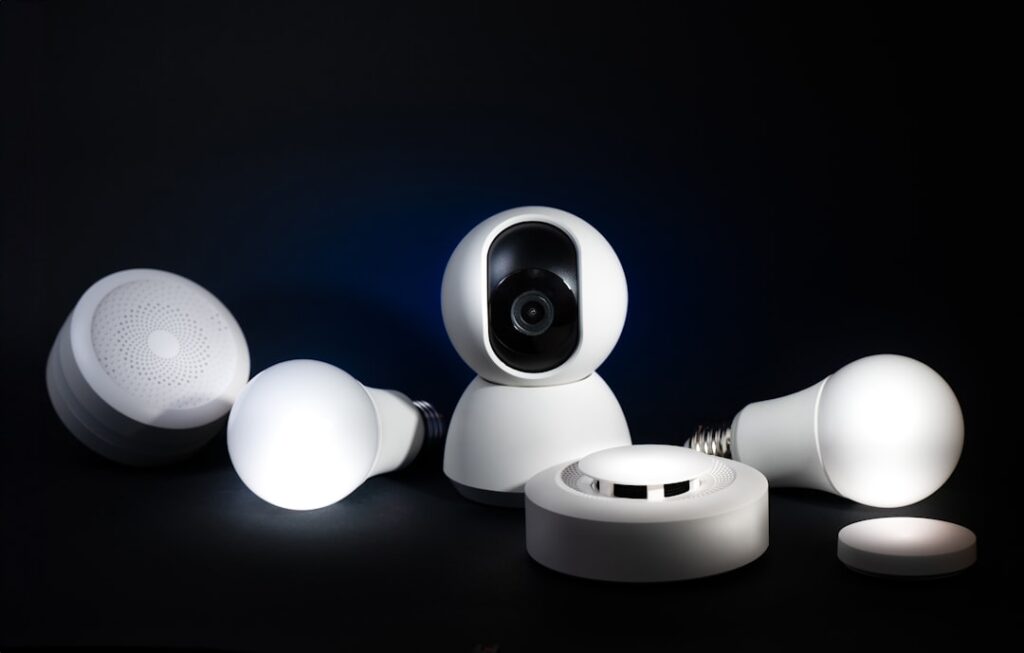When it comes to understanding your Dometic thermostat, it’s important to first familiarize yourself with the basic functions and features. The Dometic thermostat is designed to control the heating, cooling, and fan settings in your RV or home. It is equipped with a digital display that allows you to easily set and adjust the temperature to your desired comfort level. The thermostat also has buttons for mode selection, temperature adjustment, and fan speed control.
In addition to the basic functions, it’s important to understand the different modes available on your Dometic thermostat. These modes include heating, cooling, and fan-only settings. The heating mode allows you to set the temperature for your heating system, while the cooling mode allows you to set the temperature for your air conditioning system. The fan-only mode allows you to run the fan without activating the heating or cooling systems. Understanding these modes will help you effectively control the climate in your RV or home.
Key Takeaways
- Understanding Your Dometic Thermostat:
- The Dometic thermostat controls the temperature and settings of your RV’s heating and cooling system.
- It is important to familiarize yourself with the different buttons and functions of the thermostat for optimal use.
- Setting Up Your Dometic Thermostat:
- To set up your Dometic thermostat, ensure it is properly installed and powered on.
- Follow the manufacturer’s instructions to set the initial temperature and mode settings.
- Programming Your Dometic Thermostat:
- Utilize the programming features of your Dometic thermostat to schedule temperature changes throughout the day.
- Take advantage of the different modes such as heating, cooling, and fan settings for personalized comfort.
- Using Advanced Features of Your Dometic Thermostat:
- Explore advanced features such as temperature swing adjustments and remote control options for added convenience.
- Familiarize yourself with the different settings and options available to customize your thermostat experience.
- Troubleshooting Common Issues with Your Dometic Thermostat:
- If you encounter issues with your Dometic thermostat, refer to the troubleshooting guide provided by the manufacturer.
- Common issues such as incorrect temperature readings or unresponsive buttons can often be resolved with simple troubleshooting steps.
- Tips for Maximizing Energy Efficiency with Your Dometic Thermostat:
- Set your thermostat to energy-saving modes when away from your RV to conserve energy.
- Utilize the programmable features to optimize temperature settings for energy efficiency.
- Maintaining Your Dometic Thermostat for Long-Term Efficiency:
- Regularly clean the thermostat and check for any loose connections or damage.
- Follow the manufacturer’s recommended maintenance schedule to ensure long-term efficiency of your Dometic thermostat.
Setting Up Your Dometic Thermostat
Setting up your Dometic thermostat is a straightforward process that begins with installing the thermostat in a suitable location. It’s important to place the thermostat away from direct sunlight, drafts, and heat sources to ensure accurate temperature readings. Once the thermostat is installed, you can proceed with setting the date and time on the digital display. This step is crucial for programming schedules and utilizing advanced features.
After setting the date and time, you can then proceed to set the desired temperature for both heating and cooling modes. This can be done by pressing the mode button to select either heating or cooling, and then using the temperature adjustment buttons to set your preferred temperature. It’s important to set temperatures that are comfortable for you while also considering energy efficiency. Once these basic settings are in place, your Dometic thermostat is ready for use.
Programming Your Dometic Thermostat
Programming your Dometic thermostat allows you to create customized schedules for heating and cooling based on your daily routine. This feature is especially useful for maximizing energy efficiency and ensuring comfort when you’re at home or away. To program your thermostat, start by accessing the programming menu on the digital display. From there, you can set different temperature settings for various times of the day, such as morning, daytime, evening, and night.
You can also program different settings for weekdays and weekends to accommodate different schedules. For example, you may want to set lower temperatures during the day when you’re at work and higher temperatures in the evening when you’re at home. By programming these schedules, you can optimize energy usage and reduce heating and cooling costs. Additionally, some Dometic thermostats offer advanced programming features such as vacation mode, which allows you to set a specific temperature while you’re away for an extended period.
Using Advanced Features of Your Dometic Thermostat
| Feature | Benefits |
|---|---|
| Programmable Schedule | Allows you to set different temperatures for different times of the day, saving energy and money |
| Wi-Fi Connectivity | Control your thermostat remotely, adjust settings from anywhere |
| Humidity Control | Helps maintain a comfortable indoor environment by managing humidity levels |
| Energy Usage Reports | Track and analyze your energy usage to make informed decisions about saving energy |
In addition to basic programming, Dometic thermostats offer advanced features that enhance convenience and energy efficiency. One such feature is the adaptive recovery mode, which allows the thermostat to gradually adjust the temperature to reach your desired setting at a specific time. This helps avoid sudden temperature fluctuations and ensures a comfortable environment when you wake up or return home.
Another advanced feature is the filter change reminder, which alerts you when it’s time to replace the air filter in your HVAC system. This is important for maintaining air quality and system efficiency. Some Dometic thermostats also offer remote access through a mobile app, allowing you to control your thermostat from anywhere using your smartphone or tablet. This feature is especially useful for adjusting settings while you’re away from home or for making quick changes without having to manually access the thermostat.
Troubleshooting Common Issues with Your Dometic Thermostat
While Dometic thermostats are designed for reliability, there are some common issues that users may encounter from time to time. One common issue is inaccurate temperature readings, which can be caused by a variety of factors such as sensor placement, calibration errors, or electrical interference. To troubleshoot this issue, it’s important to ensure that the thermostat is installed correctly and away from any sources of heat or cold drafts. You can also recalibrate the thermostat according to the manufacturer’s instructions.
Another common issue is unresponsive buttons or a blank display, which may indicate a power or connection problem. In this case, it’s important to check the power source and connections to ensure that the thermostat is receiving power. If the issue persists, it may be necessary to reset the thermostat according to the manufacturer’s guidelines. Additionally, if you encounter any error codes on the display, referring to the user manual for troubleshooting guidance can help resolve the issue.
Tips for Maximizing Energy Efficiency with Your Dometic Thermostat

Maximizing energy efficiency with your Dometic thermostat is not only beneficial for reducing utility costs but also for minimizing environmental impact. One of the most effective ways to achieve energy efficiency is by setting appropriate temperature levels based on your comfort needs and occupancy patterns. For example, lowering the temperature during winter nights and when no one is home can significantly reduce heating costs.
Another tip for maximizing energy efficiency is to utilize the programmable scheduling feature of your Dometic thermostat. By setting different temperature settings for various times of the day and week, you can avoid unnecessary heating or cooling when it’s not needed. This can lead to substantial energy savings over time. Additionally, regular maintenance of your HVAC system, including cleaning or replacing air filters, can improve energy efficiency by ensuring proper airflow and system operation.
Maintaining Your Dometic Thermostat for Long-Term Efficiency
Maintaining your Dometic thermostat is essential for ensuring long-term efficiency and reliable performance. Regularly checking and replacing the batteries in your thermostat is crucial for preventing power interruptions and maintaining accurate timekeeping and settings. It’s also important to keep the thermostat clean from dust and debris by gently wiping the exterior with a soft cloth.
Furthermore, scheduling annual HVAC system inspections and maintenance can help identify any potential issues with your thermostat or heating/cooling systems before they escalate into major problems. This includes checking for loose connections, calibrating temperature sensors, and ensuring proper airflow in ducts and vents. By staying proactive with maintenance, you can extend the lifespan of your Dometic thermostat and HVAC system while maximizing energy efficiency and comfort in your home or RV.
Looking for ways to keep your hair looking great while on the road? Check out this article on dometic thermostat and how it can help you maintain the perfect temperature for your hair tools, ensuring your hair stays fabulous no matter where you are.
FAQs
What is a Dometic thermostat?
A Dometic thermostat is a device used to control the temperature and settings of heating, ventilation, and air conditioning (HVAC) systems in recreational vehicles, campers, and boats.
How does a Dometic thermostat work?
Dometic thermostats work by sensing the temperature in the environment and sending signals to the HVAC system to adjust the heating or cooling as needed. They can also control fan speeds and other settings.
What are the features of a Dometic thermostat?
Dometic thermostats often come with features such as digital displays, programmable settings, temperature control, and compatibility with various HVAC systems.
How do I install a Dometic thermostat?
The installation process for a Dometic thermostat may vary depending on the specific model and the HVAC system it is being installed with. It is recommended to follow the manufacturer’s instructions and, if necessary, seek professional assistance.
How do I troubleshoot a Dometic thermostat?
Common troubleshooting steps for a Dometic thermostat may include checking the power source, replacing batteries, resetting the thermostat, and ensuring proper connections with the HVAC system. If issues persist, contacting Dometic customer support may be necessary.


